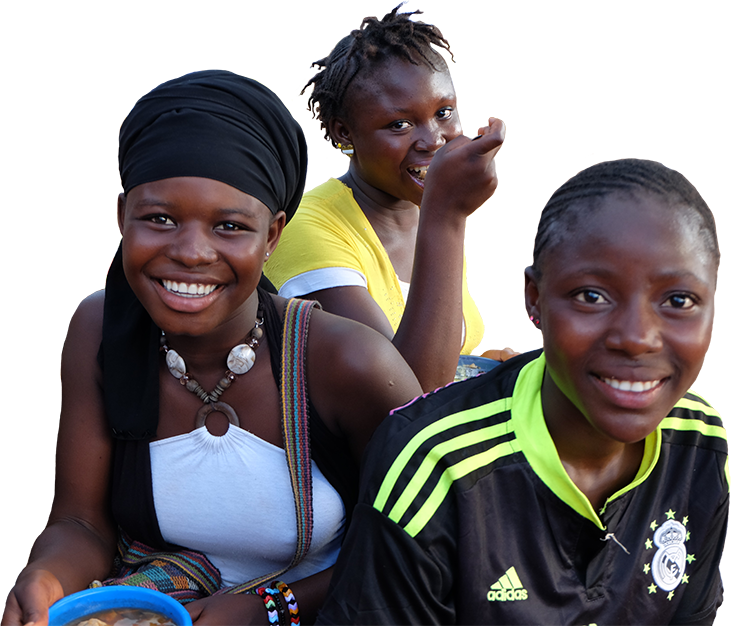Nutrition services typically do not prioritize adolescents and adolescent-friendly health services rarely include nutrition. Nutrition services need to be responsive to adolescents’ unique needs and priorities and address the barriers they face in accessing services. Programs must consider the diversity of adolescents’ situations and experiences, as well as the varied social norms and expectations of adolescents in the family and community. The Adolescent Nutrition Resource Bank includes guidelines and tools used in nutrition services for adolescents.If you have relevant service delivery documents or tools, please send them to info@advancingnutrition.org.
We found 136 resource(s)
Perspective: Challenges in Use of Adolescent Anthropometry for Understanding the Burden of Malnutrition
Journal Article published by Advances in Nutrition in
This study discusses national prevalence estimates on adolescent girls (ages 10 to 22) from the 2014 State of Food Security and Nutrition in Bangladesh. It emphasizes that determining the true prevalence of undernutrition, overweight, and obesity is complicated by racial/ethnic variation across populations in timing of the adolescent growth spurt…
National Multi-Sectoral Coordination Framework for Adolescent Girls 2017/2018-2021/2022
Framework published by Government of Uganda, United Nations in
This multi-sectoral framework outlines the government of Uganda’s commitments and efforts related to investing in adolescence as the second decade of life. It describes how ministries will coordinate to deliver services to achieve sustainable results for adolescent girls. Although it is not focused on nutrition, the framework advocates for…
ANSHika Samachar (April 2019 issue)
Information, Education and Communication Materials published by JSI R&T India Foundation in
This newsletter highlights programs and activities conducted during the previous quarter of Project ANSH in four districts of India. Activities include teacher trainings on Water, Sanitation and Hygiene (WASH) promotion, peer education, an assessment of fast food consumption among adolescents, and other health interventions.
Social and Behavior Change Communication Strategy: Maternal and Child Nutrition During the First 1000 Days and Adolescent Girls’ Nutrition
Technical Report published by Manoff Group, Save the Children, USAID in
This report documents the outcomes and lessons learned from a rapid assessment of Growth through Nutrition’s adolescent girl nutrition SBCC strategy programming in Ethiopia. The report's recommendations focus on the training of teachers and student group leaders/facilitators; actions that teachers, facilitators, and program administrators can…
Frequently Asked Questions: Weekly Iron and Folic Acid Supplements (WIFAS) for Adolescents
Brief published by Nutrition International in
This document contains answers to 28 common questions about weekly iron and folic acid supplements (WIFAS). The information is organized into the following categories: overview of WIFAS, WIFAS and anemia, the benefits of WIFAS, safety considerations, WIFAS and reproductive health, and WHO-recommended formulation.
UNICEF Guidance Note: Adolescent Participation in UNICEF Monitoring and Evaluation
Guideline/Guidance published by UNICEF in
This is the pilot version of a guidance note on adolescent participation in program monitoring and evaluation (APM&E). The guidance note aims to help UNICEF staff and partners to understand how adolescents can be involved in monitoring and evaluation activities, issues to consider when designing and implementing APM&E activities, and tools…
The Innocenti Framework on Food Systems for Children and Adolescents
Framework published by UNICEF in
The report describes the Innocenti Framework on Food Systems for Children and Adolescents' five drivers and four determinants that shape children and adolescents’ diets. It details each component, how they interact, and how a food systems approach can improve diets.
100 Messages
Training Material published by Children for Health in
This publication focuses on 100 simple health education messages for children ages 8 to 14. The messages correspond to ten key health topics, one of which is nutrition. The health messages are designed for parents and health educators to use with children at home and in schools, clubs, and clinics.



